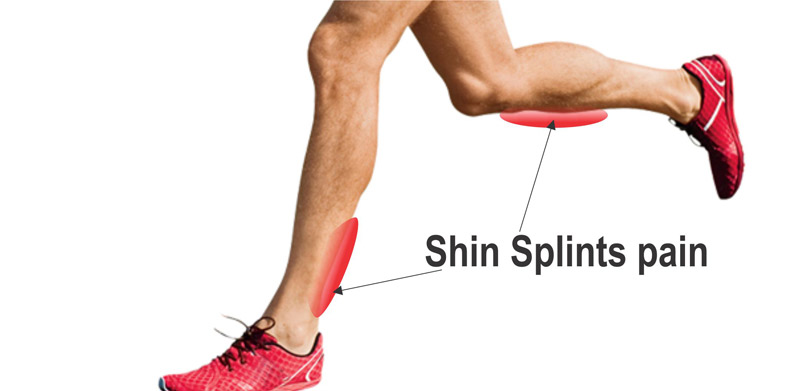Runners Shin Splints
Most runners will have experienced that sharp pain in the front of their shin, commonly known as shin splints, at some point in their running career. Shin splints can affect anyone – regardless of experience level or fitness.
The problem does not begin in the shin!
Splints (or better known as medial tibial stress syndrome) are a type of injury caused by overuse or repetitive use. They actually occur due to an underlying weakness in the muscles of the foot and ankle. Other muscles have to work harder to compensate for this weakness. The joints in the foot and ankle become less mobile once those muscles become tight and overworked. Listed below are five tips to prevent shin splints.

1. Evaluate your footwear.
If you are wearing shoes that don’t have enough support, your muscles will be affected. Since every person is different, there is not a one-shoe-fits-all solution. It would be wise to go to a shoe store that specialises in running shoes and get properly fitted and assessed.
2. Stimulate your muscles and joints.
There are foam rollers available for this type of gentle manipulation, providing compression and friction to the muscle and mobilising the joint. For shin splints, you will want to treat the soft tissue of your calves, the shin, and the bottom of your foot to a slow, controlled rolling motion with a foam roller or something similar.
3. Strengthen the lower leg muscles.
Obviously, these overworked muscles need time to heal, so an aggressive strengthening regime is not advised. Gentle strengthening methods like yoga or a low-impact strength training class will help restore your damaged muscles to a healthier state.
4. Be mindful of core strength.
The lower back and pelvis muscles are instrumental in determining how well the joints around them move. Your body will not function properly if you do not have a strong core. The stronger your core muscles, the more efficient the movements of your hips, knees, feet and ankles will be. Pilates is a great way to strengthen this essential muscle groups.
5. Talk to your podiatrist, put your feet up, ice your muscles, and mark the calendar for your next event.
It is important to talk to a podiatrist because some instances of shin splints can be indicators of a more serious problem. Podiatrists can also provide orthotics to assist in reducing the muscle workload and changing the mechanics of muscle activation. After which, they will advise you to rest up before your next race!
For more information about how Podiatry can help you, call us today
